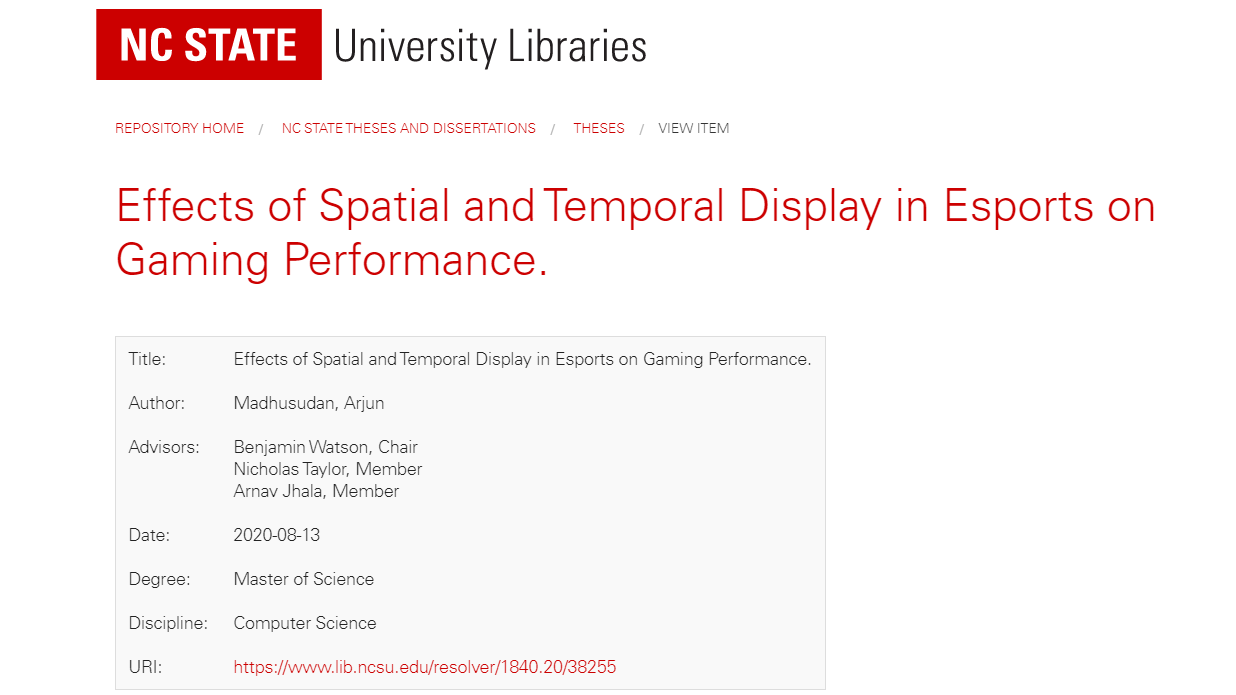Effects of Spatial and Temporal Display in Esports on Gaming Performance.
Under the guidance of Dr. Benjamin Watson
Working on this research project over the last year has been super exciting. I was able to spend academic time with a game that I have been playing since 2014 - Dota 2. I worked through the research process, all the way from coming up with a project idea to executing it. Coming up with the experiment design and actually conducting it with participants was very tasking, especially when I had to change most of my experiment halfway through to accommodate for Covid-19 safety procedures. Despite all the obstacles, seeing the experiment through to fruition was very rewarding.
Through this project, I got the opportunity to work with researchers from Nvidia and was able to experience industry-level scientific research processes first-hand. It also helped me improve my own gameplay, which is an added bonus.

